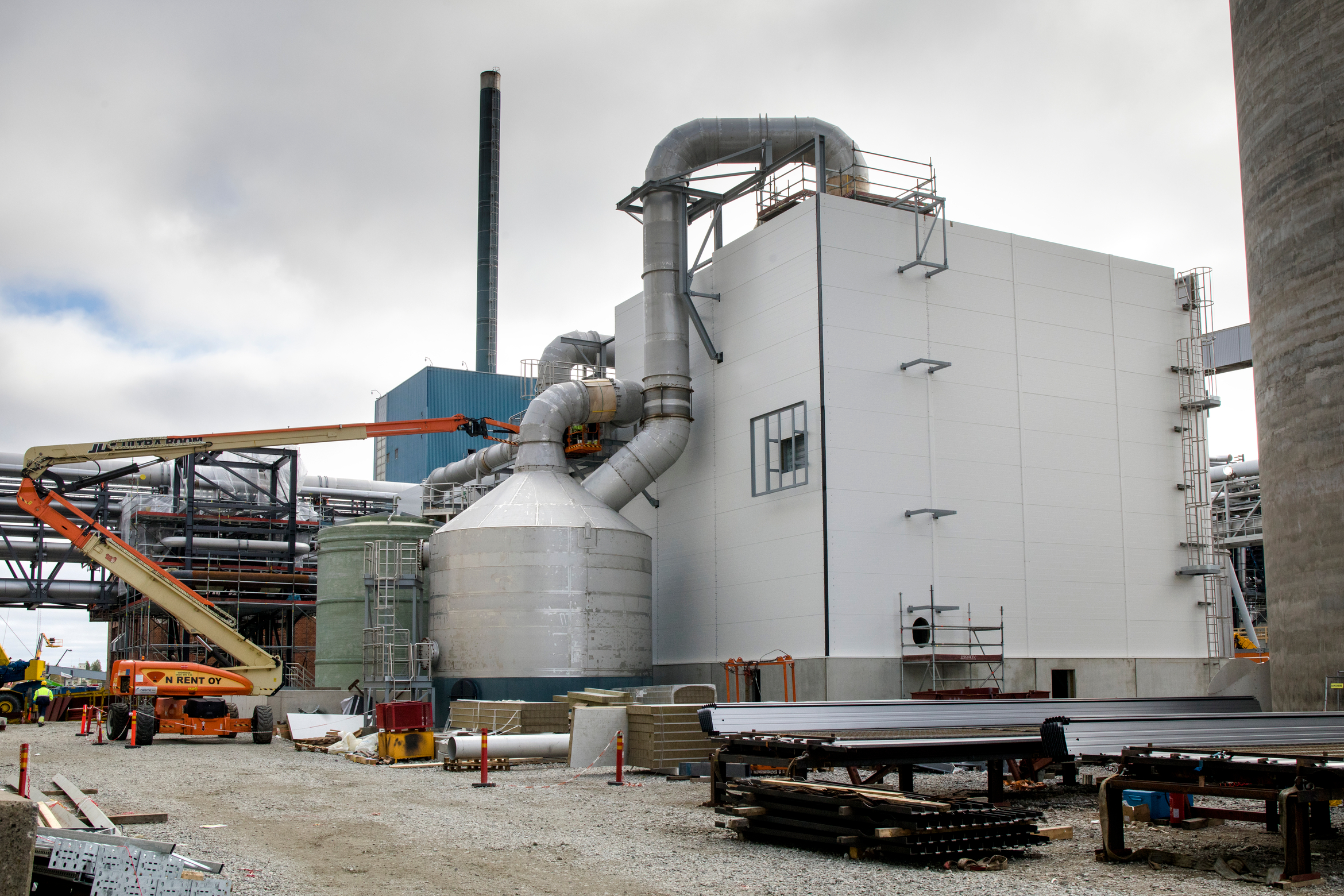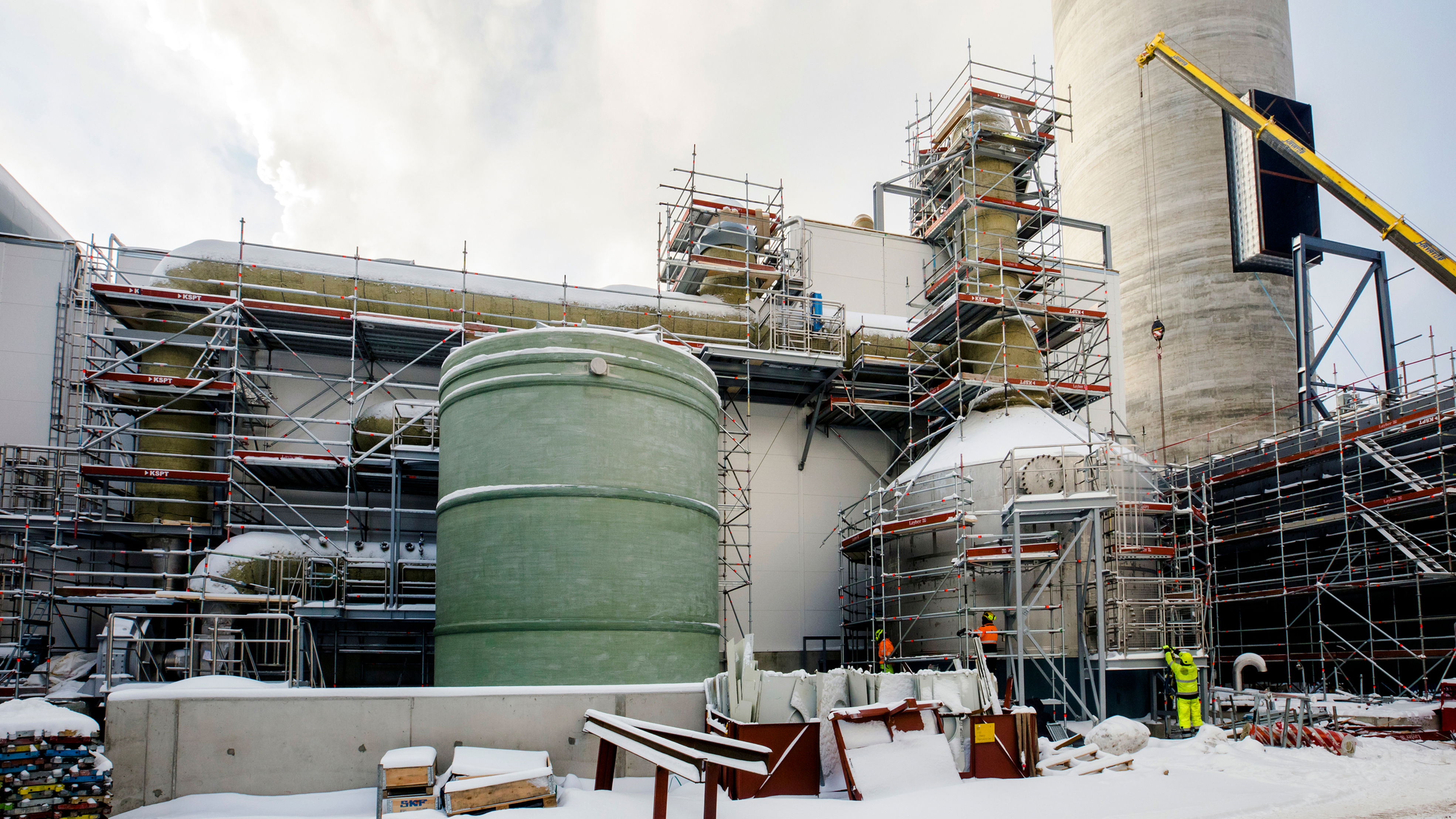Kemi bioproduct mill's own sulphuric acid plant represents the latest technique. A similar sulphuric acid plant can only be found at the Äänekoski bioproduct mill.
- The big difference compared to the Äänekoski mill is that our environmental permit in Kemi is stricter than in Äänekoski. The nox limits, i.e. nitrogen oxide emission limits, are so low that we have put a Decnox pre-combustion chamber here to reduce emissions. This is not the case in Äänekoski, says Noora Piisilä.
She works with the recovery process and was responsible for the sulphuric acid plant as a project manager.

Sulphurous, strong odorous gases are produced in pulp boiling and lye evaporation. Dilute odorous gases are produced from pulp processing and storage of lye and pulp.
- Diluted odorous gases have very low sulfur concentrations, which means they are practically water vapor.
The concentrated sulphurous odorous gases go to the sulfuric acid plant for the production of sulphuric acid, and the dilute odorous gases go to the recovery boiler, where they are used as combustion air for the recovery boiler.
Concentrated odorous gases are collected from the mill and led to the evaporation plant in a large water lock tank, from where the gases are sucked by a vacuum pump to the sulphuric acid plant. At the sulphuric acid plant, concentrated odorous gases go through a droplet separator and a flame arrester.
- The concentrated odorous gases first go into the Decnox chamber and the sulphur is burned into sulfur dioxide (SO2) and led from there to the converter with a flue gas fan. In the converter, sulphur dioxide is converted into SO3, i.e. sulfur trioxide, with the help of a catalyst, and the gas is led to the sulphuric acid production tower, where it is condensed. At the same time, SO3 reacts with the water contained in the gas, resulting in sulphuric acid, Piisilä explains the process.

Self-sufficient in terms of sulphuric acid
The sulphuric acid plant is located directly next to the mill chimney. The building is 42 x 12 x 13 meters in size and cannot be seen from further away.
- It is not large in size, but it is significant in terms of the operation of the mill and the environment. About 60 tons of sulphuric acid are obtained per day and all of it is used in our own mill. Sulphuric acid is valuable to our mill and thanks to the sulphuric acid plant we are self-sufficient in terms of sulphuric acid.
At the same time, the sulphur load on the environment and truck traffic are reduced, as sulphuric acid does not need to be brought to the mill. Sulphuric acid is mainly used in the production of pine oil. It can also be used in our own pulp mill to adjust the pH of bleaching.
If necessary, the sulphuric acid plant can also produce sodium bisulphate, which is used in the boiler.
When the bioproduct mill operates normally, there are no odor emissions at all. If there is a disturbance at the mill, the strong odorous gases are directed to the recovery boiler, which serves as a backup combustion place, and only as an extreme measure to the exhaust pipe.
- Previously, the strong smelling gases were burned in a recovery boiler. If, for example, the sulphuric acid plant is out of action due to maintenance work, the plant's strong smelling gases can be directed to the recovery boiler, where they are burned. It's our back-up burning place.
The sulphuric acid plant supports Metsä Group's sustainability goals and contributes to the new mill's closed chemical cycle, where water and chemicals are recycled and returned to the process for reuse. This reduces the need to transport chemicals by rail and road, and significantly reduces the mill's water intake. The mill operates completely without fossil fuels and produces 2.0 TWh of renewable electricity annually. It corresponds to 2.5% of the entire electricity production in Finland.
